A butterfly diagram of the latitude of sunspot occurrence versus time.
Click on image for full size
NASA's Marshall Space Flight Center
Maunder's Butterfly Diagram
Throughout the solar_cycle,
the latitude of sunspot
occurrence varies with an interesting pattern.
The plot on the left shows the latitude of sunspot occurence versus
time (in years).
Sunspots are typically confined to an equatorial belt
between -35 degrees south and +35 degrees north latitude.
At the beginning of a new solar cycle, sunspots tend to form at
high latitudes, but as the cycle reaches a maximum (large numbers
of sunspots) the spots form at lower latitudes. Near the
minimum of the cycle, sunspots appear even closer to the equator,
and as a new cycle starts again, sunspots again appear at
high latitudes. This recurrent behavior of sunspots gives
rise to the ``butterfly'' pattern shown, and was first
discovered by Edward Maunder in 1904. The reason for this
sunspot migration pattern is unknown. Understanding this pattern
could tell us something about how the Sun's internal magnetic
field is generated.
You might also be interested in:
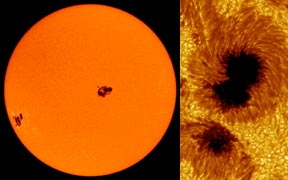
Sunspots are dark spots on the Sun. They may look small, but they are actually as bigas a planet like Earth or Mars! Sunspots are "dark" because they are colder than the areas around them. Of course, they
...more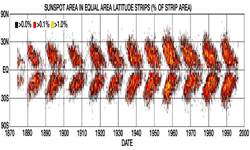
Throughout the solar_cycle, the latitude of sunspot occurrence varies with an interesting pattern. The plot on the left shows the latitude of sunspot occurence versus time (in years). Sunspots are typically
...more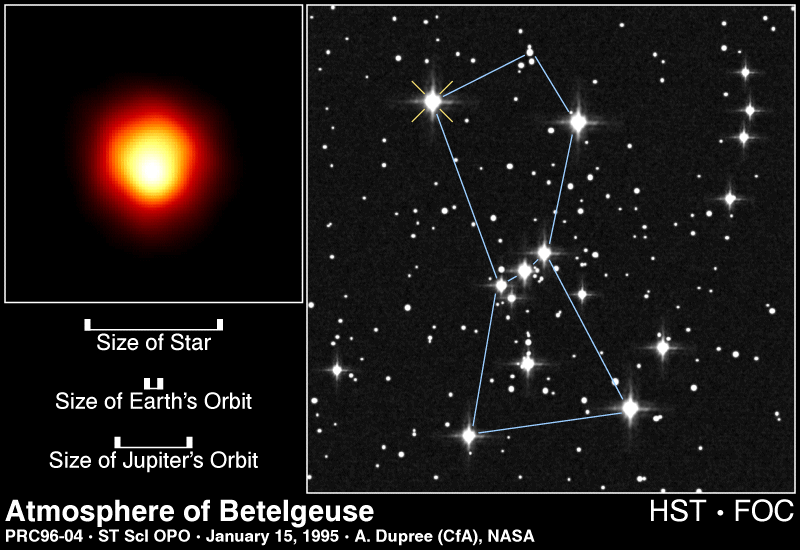
When the temperature in the core of a star is really hot (100 million degrees Kelvin!) fusion of Helium into Carbon happens. Oxygen is also formed when the temperature is this high. When it gets even hotter
...more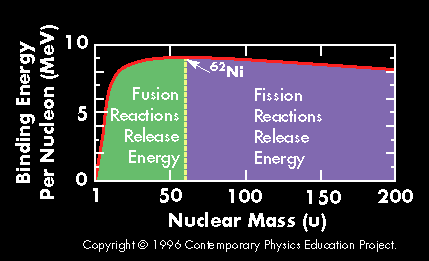
A plot of the binding energy per nucleon vs. atomic mass shows a peak atomic number 56 (Iron). Elements with atomic mass less then 56 release energy if formed as a result of a fusion reaction. Above this
...more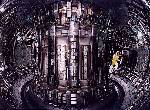
Nuclear fusion has been achieved in a controlled manner (that means no bombs are involved!!). Right now, these fusion experiments take in more energy than they produce. So they can't be used right now
...more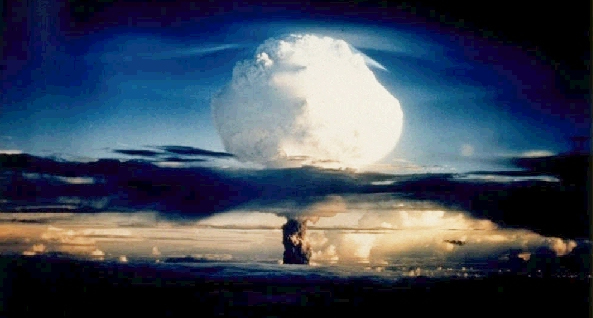
In the Hydrogen bomb, an explosion takes place so that the temperature and density is right for fusion to occur. This fusion results in a sudden release of energy that produces an even bigger explosion.
...more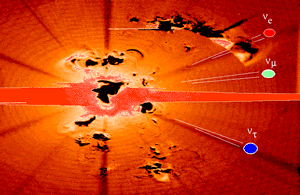
All of the matter and energy in the Universe was initially found in a very small space. An explosion happened which caused the Universe to begin expanding.
...more














